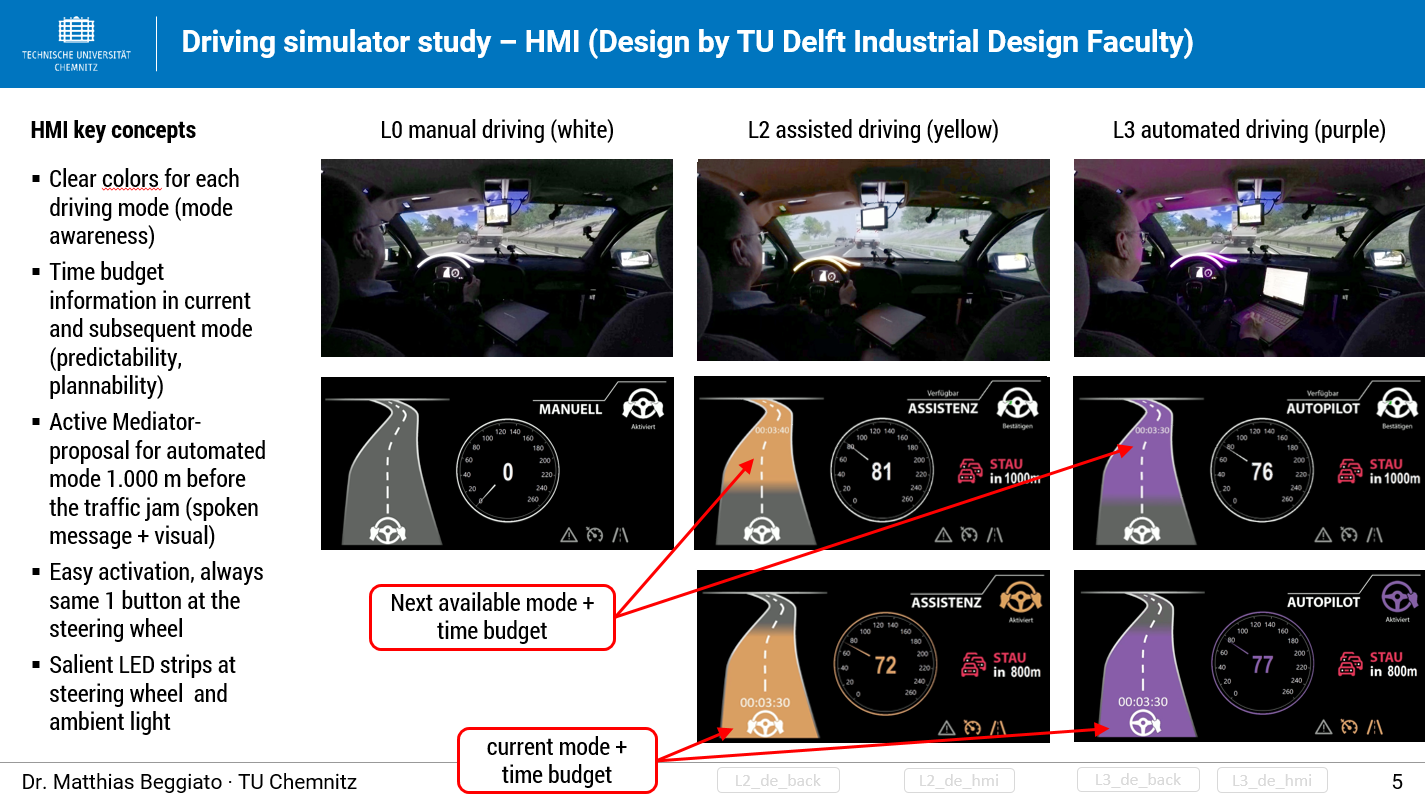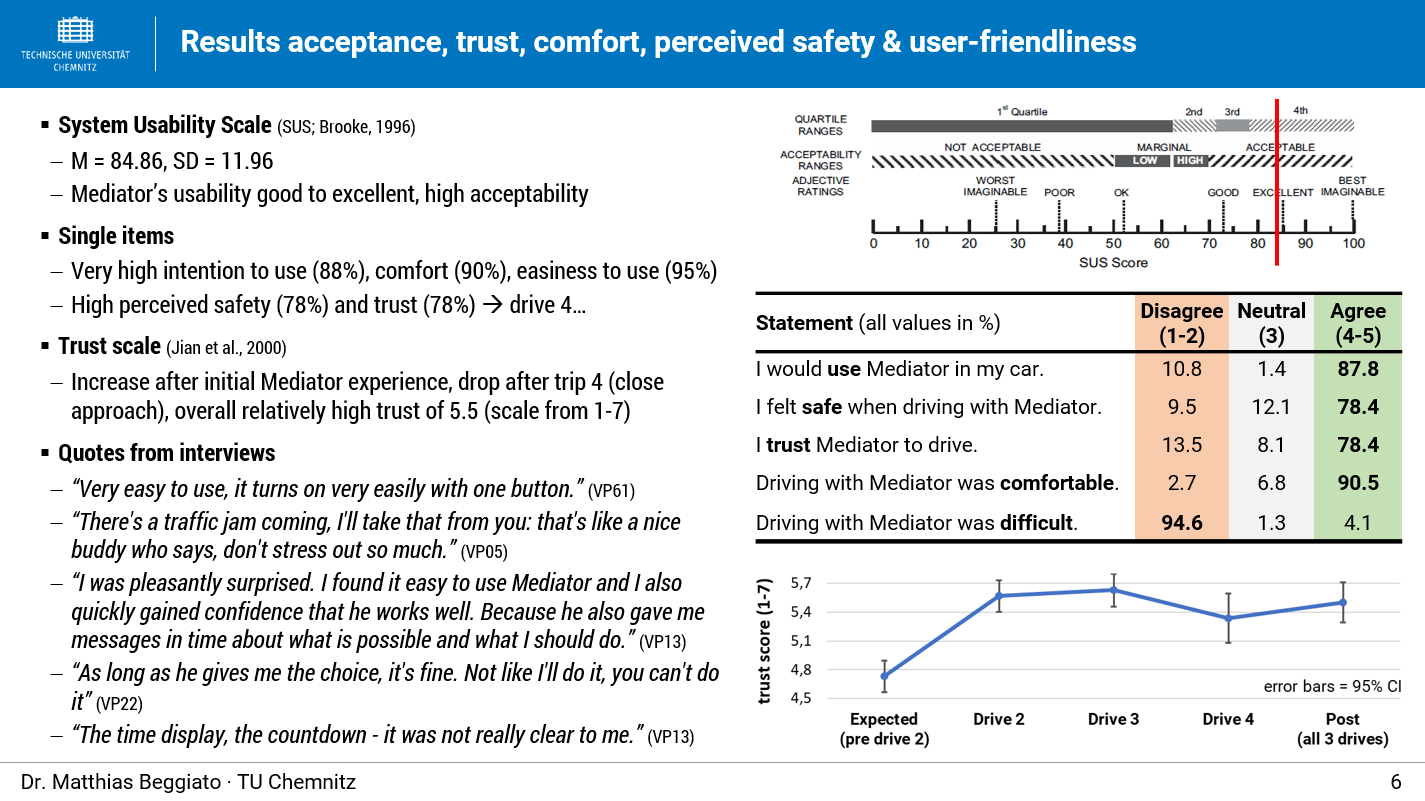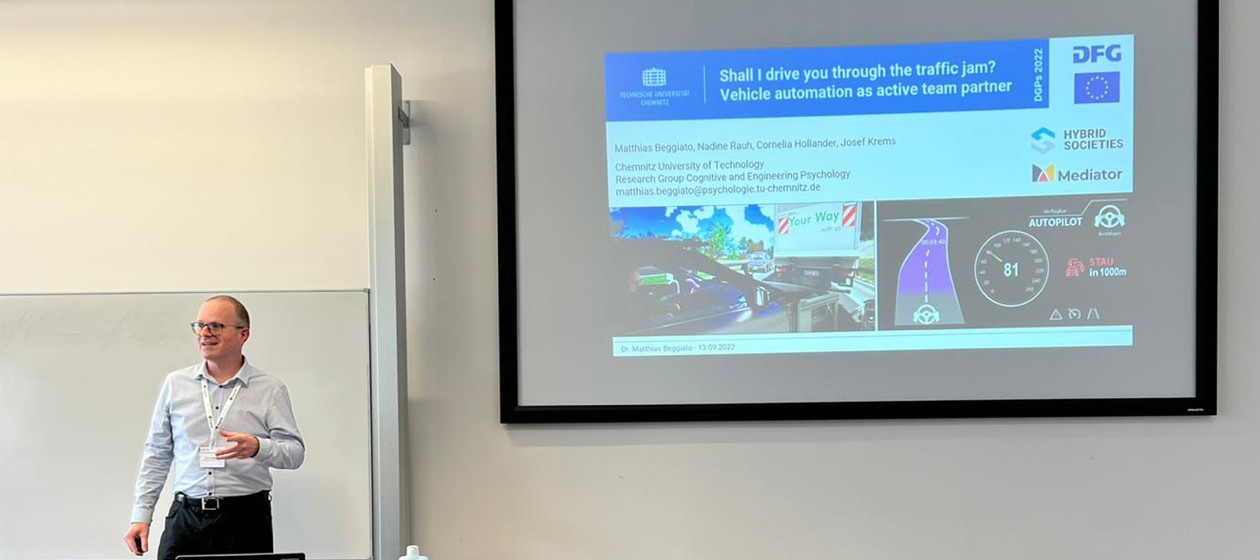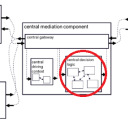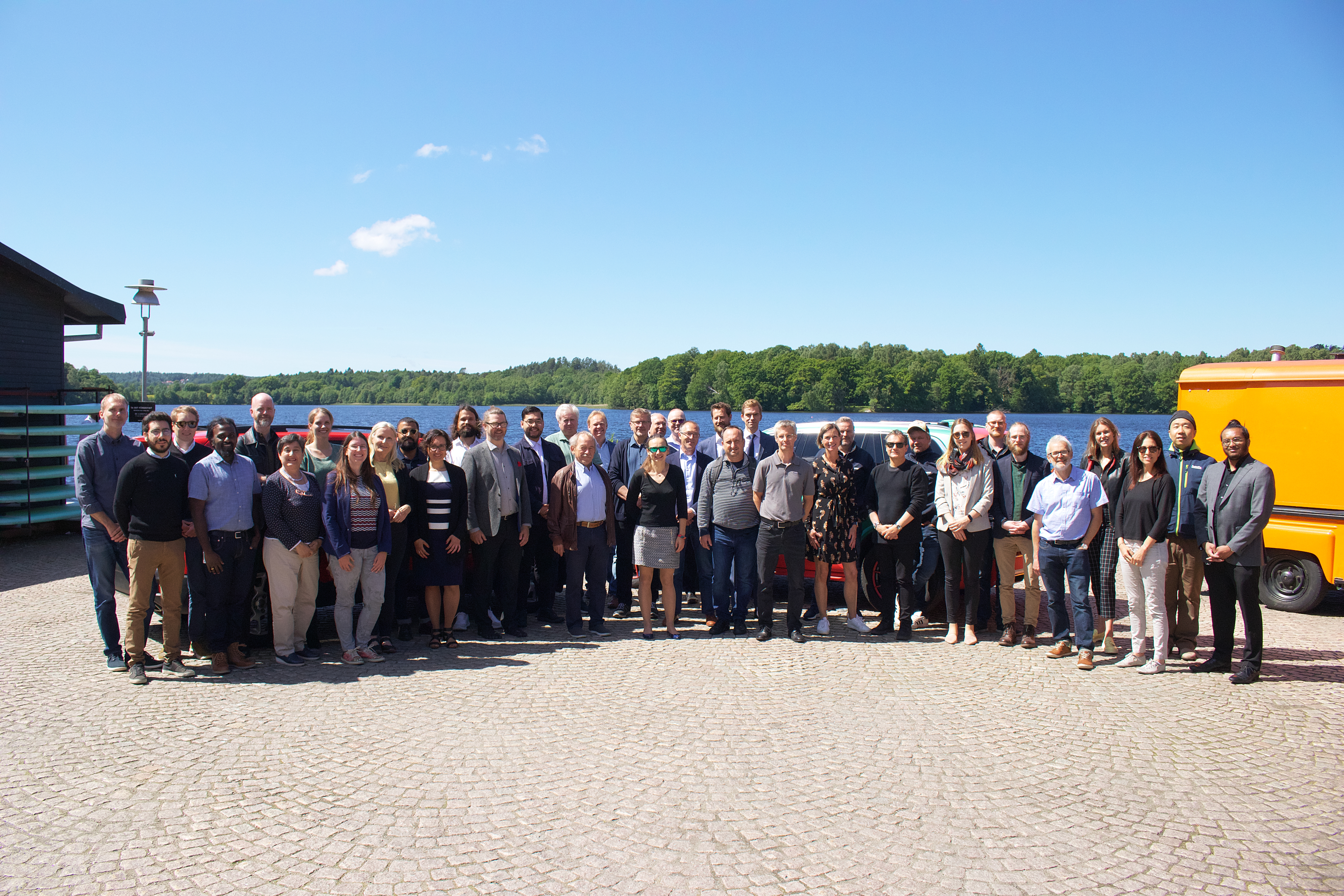Earlier this week Dr. Matthias Beggiato presented results from the Mediator study done in WP3 by Chemnitz University of Technology (Germany) at the 52nd Congress of the German Psychological Society (Deutsche Gesellschaft für Psychologie, DGPs) in Hildesheim (https://www.uni-hildesheim.de/dgps2022/). About 50 attendees attended this session, mainly psychologists.
His session topic was on „smooth coordination and cooperation of humans and machines“ followed by extensive discussions on how to design the partnership between humans and automated systems in various domains. The main content of the presentation 'Shall I drive you through the traffic jam? Vehicle automation as active team partner' was the Mediator concept and the evaluation results of the HMI (2 screenshots below). These results will also be part of Deliverable 3.3.
Presentation abstract
Automated driving is supposed to bring several benefits such as increased safety and relaxation for the driver. However, to exploit these benefits, drivers must be aware of the functionalities and use them appropriately. It is a known problem of current driver assistance systems that a great proportion of drivers are not even aware of having a potentially helpful system in their own vehicle, report disuse/misuse or demonstrate misperceptions about the system capabilities. To tackle this issue, automated driving systems could actively propose to drive in situations where automation is available and it is expected that drivers don't like to drive themselves (e.g. traffic jams); based on the idea of a driver-vehicle-team that knows each other’s limitations, strengths and current states. In a driving simulator study at TU Chemnitz, 74 participants balanced in age and gender evaluated such an active automated driving system. All participants drove the same route (including a traffic jam) in manual, partial (SAE level 2) and conditional automated driving mode (SAE level 3). In conditional automated mode, participants could answer emails on a laptop in the vehicle. An innovative Human Machine Interface actively proposed automation already before arriving at the traffic jam. Time budget information for the respective automation mode as well as LED-strips in a dedicated colour concept should ensure mode awareness and plannability of secondary tasks. Results on acceptance, trust, benefits and drawbacks of such a system from a naïve user perspective are reported by combining questionnaire and interview data in a mixed-methods approach.
